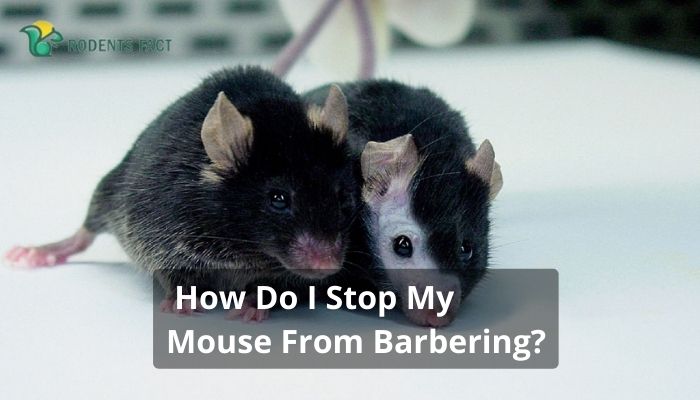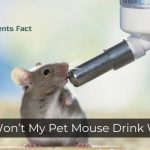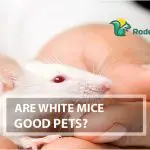How Do I Stop My Mouse From Barbering?
Who would have guessed that baldness could be discovered in animals other than middle-aged males, much less in the laboratory mouse? The appearance of baldness in mice is never attractive. The majority of the time, the reason for baldness (also known as alopecia) in laboratory mice remains a mystery.
How Do I Stop My Mouse From Barbering?

Barbering may be prevented in breeding cages by providing enrichment like shelter. Enrichment such as toys, tunnels, plastic tubs, and other items should be provided with caution.
What Should I Do With the Bald Mice?
The only way of stopping mice from being barbered is to separate the culprits or the victims. The fur normally comes back after a few weeks.

This is especially true if there is more than one whisker-eater present in the cage or if the hair is being eaten in places other than the muzzle.
An area’s size and form, as well as how often it sheds hair in a specific pattern, might vary widely.
Barbering-Related Behavioral Variants
Self-Plucking
Self-plucking is a behavior in which the mouse pulls off its own hair, whiskers, or fur in an aggressive manner.
The cheek, the inside-outside of the forearms, and the genital area are the most regularly impacted and barbered parts of the body during this sort of barbering.

Cage-Mate Plucking
During cage-mate plucking, often referred to as “social barbering” or “hetero-barbering,” a mouse will barber another mouse. This barbering habit often affects the regions between the ears, tail, dorsal face, or whiskers.
It is common to notice the receiver of barbering activity flinching, a reaction that is not seen in allogrooming, a separate behavior linked with fur and grooming but viewed as more favorable and forming social relationships.

Whisker-Picking
The term “whisker-picking” has been included in certain studies as a distinct category of barbering. Just the whiskers (vibrissae) and neighboring hairs of one mouse are pulled by another mouse in whisker-picking.
Is My Mice’s Hair Loss a Symptom of Stress?
Alopecia areata may be triggered by stress. It is possible that a combination of genetics and external circumstances, including things like the season, humidity, crate type, and nutrition, are at play. No viral infections, immunological responses, or genetic changes are known to induce alopecia in C57BL/6 and similar strains.

In mice kept in pressurized, independently ventilated (PIV) racks, severe fur loss is more prevalent than in traditional cages.
In the winter, shedding is more common than in the summer.
Female mice lose their fur at a higher rate than men. Do hamsters get the same baldness as mice? Know the difference between mice and hamsters.

Risk Factors to Barbering
Barbering is five times more common in breeders than in stock mice, with females barbering an average of 1.5 times more often than males. When mothers cut their puppies’ hair, this is an obvious example.
Sixty-two percent of AALAS members reported noticing barbering activity in their breeding cages in a recent ClearH2O study.
Many environmental elements, including the form of the cage, its location, the relationship between its inmates, and the presence of other barbers inside, were shown to be connected with stress in barbering.
It was once assumed that barbering was a kind of power. Studies in the last several years, however, have demonstrated that a mouse’s relative dominance in its cage has little to do with its level of hair loss, and vice versa.

Prevention & Treatment
Barbering is a complicated aberrant repeated activity connected with hair loss. Laboratory mice that pluck hairs and whiskers off cage-mates, pups, or themselves leave patches of baldness.
Using a spray bottle to spritz newborn mice is a quick and simple screening method. It is not unusual for mice to indulge in strange antics. Barbering and UD are more likely to emerge later in adulthood if a person has a history of abnormal grooming.

Frequently Asked Questions
1. Why Is My Mouse Going Bald?
Some mice develop bald areas without hair thinning or loss. This generally suggests mouse barbering or cage mate grooming. Itching and facial hair loss may suggest an allergy to the mouse’s bedding or lice.
2. Is Barbering in Mice Genetic?
Barbering is genetically-based because aggressive inbred mice do not barber.

3. Why Is My Rat Losing His Fur?
Rats may lose their hair for numerous reasons: a parasite infection producing scabbing of the skin, an allergy bringing contact dermatitis, or a poor diet. Know why mouse keeps dying because of poor diet.
Final Words
Now you understand the problem and solution to your question “how do i stop my mouse from barbering.”
Mice are not flawless. Barbering is a frequent lab habit. Since barbering could be noticed during the behavioral studies, it is crucial to know how to manage it and what to do if you see mice barbering.
Excessive barbering or grooming may lead to bald areas or, in extreme cases, open sores. A mouse with an open wound may be attacked more aggressively, leading to its death.




